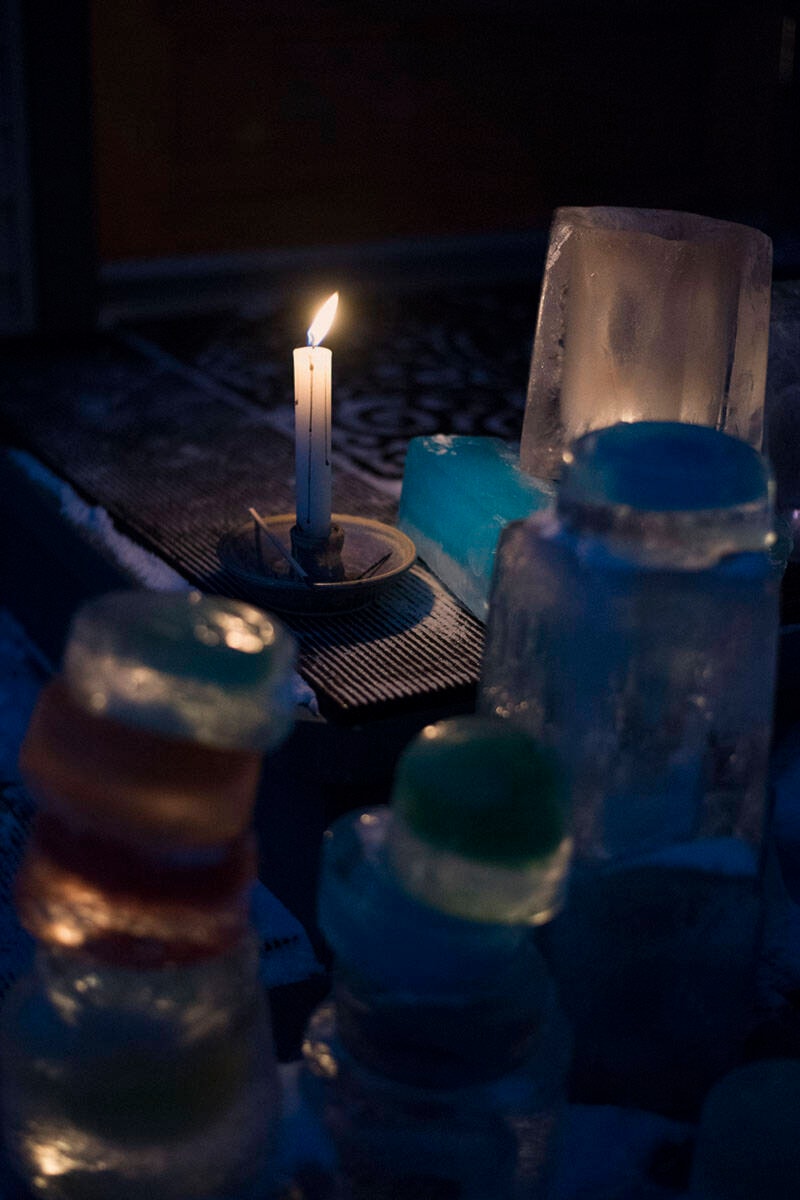Normally Elise Maltin hosts a big celebration during Hanukkah, involving friends, family, children and weeks of preparation and cooking.
During COVID-19 it’s been a quieter event, with menorah lighting by Zoom with a sister across the world in a far-off time zone.
“For me, it does bring back sweet memories of my growing up,” she said of the Jewish holiday, which takes place in the winter around the same time as Christmas.

The exact dates of the eight-day Hanukkah move year to year because they are based on the lunar Hebrew calendar. This year’s Hanukkah ran from Nov. 28 to Dec. 6.
“For the Hanukkah party, I cook for a couple of weeks. I have a million potato latkes. Between the food and all the kids, the house is just crazy. I haven’t done it since COVID and it’s sort of weird. I haven’t had a big gathering for a while.”
One of the holiday traditions that has persisted through the pandemic is an annual ice menorah crafted on her doorstep in Whitehorse.
Maltin’s display is a little more subtle than the glowing, flashing, inflatable and otherwise attention-grabbing Christmas displays on every street at this time of year.

Like a traditional menorah, this one has space for nine lights, but the candles are rested in blocks of ice rather than a metal candelabra.
Maltin’s sculptures themselves are made of water and food colouring, molded into shapes by special star-lantern molds and other regular containers. For the eight days of Hanukkah, Maltin takes the shammash, or helper candle, and lights an additional candle at sundown until they all glow together on the final night.
She got the idea for the ice menorah from another family while living in Yellowknife, and brought it along with her to Whitehorse nine years ago.
According to Jewish tradition surrounding Hanukkah, a holy temple in Jerusalem was looted and Judaism violently outlawed during the second century BC. When the temple was liberated, a single container of sealed oil was found to light the new altar. While there was only enough oil to last a day, a miracle occurred and the lamp was able to be lit for eight days.

The Jewish festival of lights remembers that story and celebrates it with candle lighting, prayers, and special foods and games.
“It’s all connected. I think that’s what’s nice about it is that there are lots of stories, and lots of food, and tradition,” she said.
Inside her home, Maltin has a more traditional menorah bought in Jerusalem for her grandparents. Eventually, it became hers. Even though she is not a religious person, she is aware that her grandparents and their cultural traditions survived the horrors of the holocaust and the family’s migration to Canada.
“I think about it. Like my grandparents, my great-grandma, back through to the beginnings in our family. When I light the menorah I think of my grandparents. So it’s also about survival. For me, it’s really important that I keep this part of my culture, because a lot of my ancestors died because of it,” she said.
Although Maltin notes that Hanukkah is a relatively minor religious holiday in Judaism, the candles are also about sharing light in the darkest time of the year – a universal feeling, especially in a place like the Yukon, where solstice holds a special meaning.
“It’s just a beautiful way to bring some light into the darkest days of the year,” she said.
Contact Haley Ritchie at haley.ritchie@yukon-news.com
